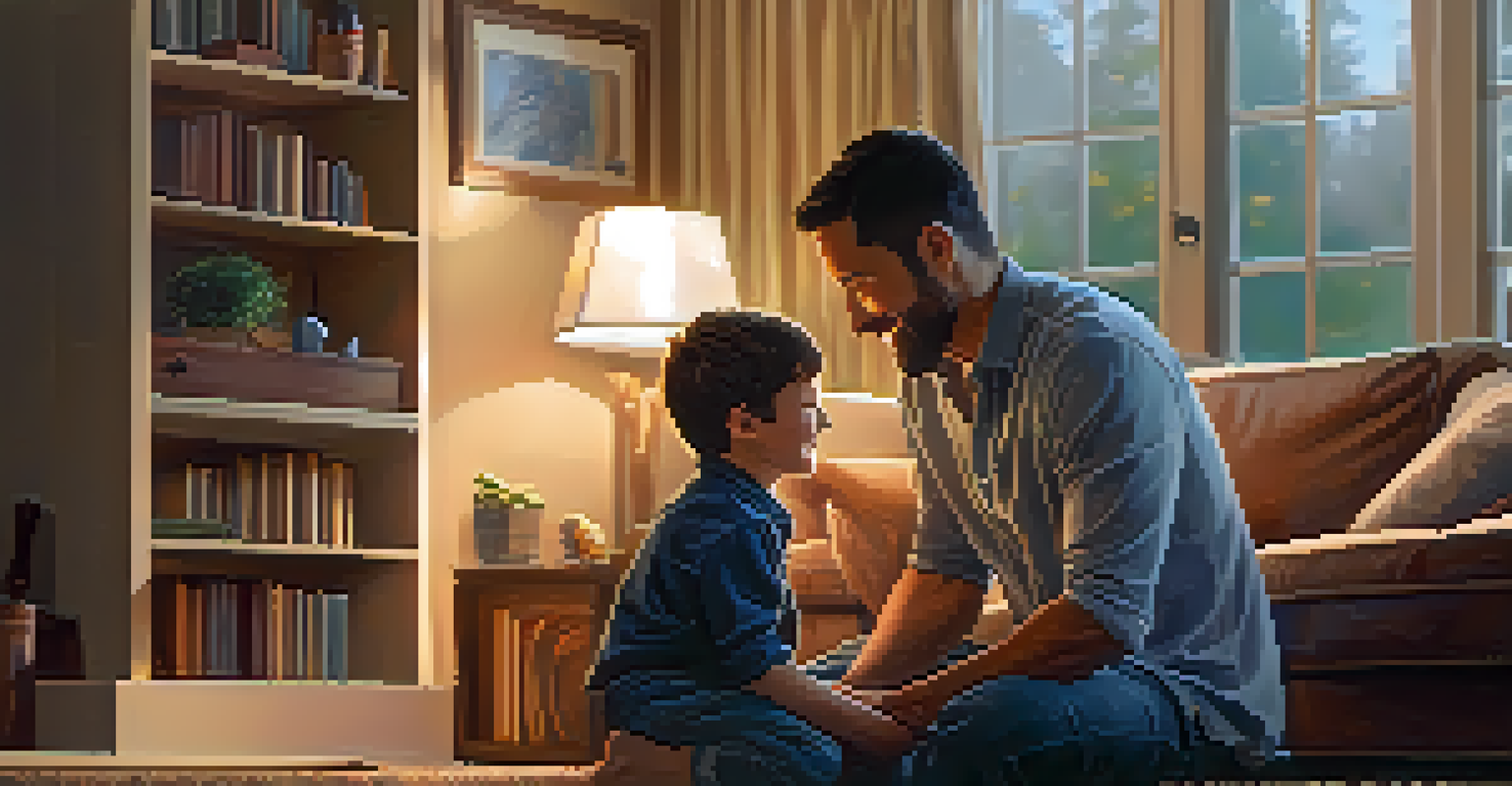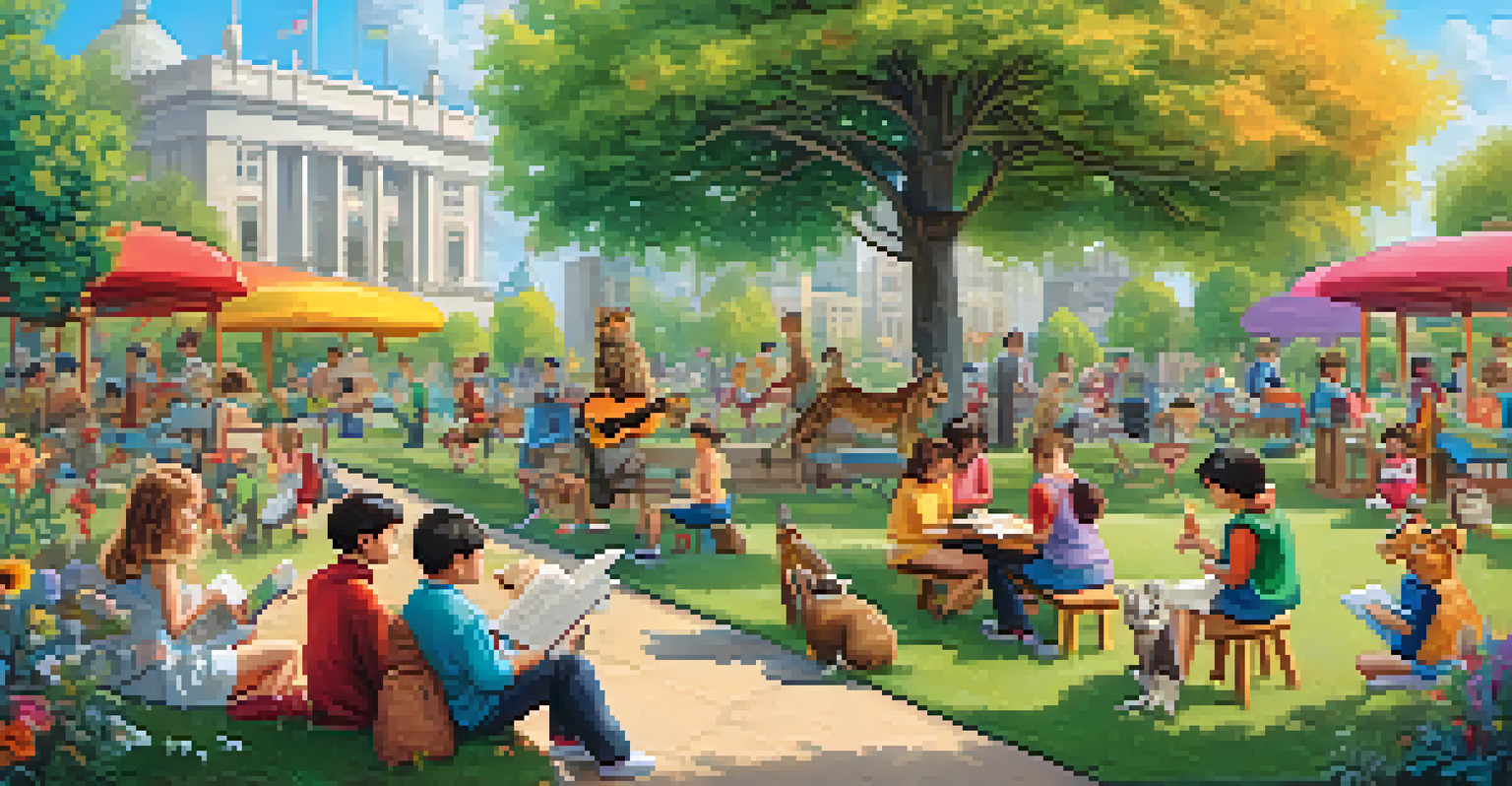Hollywood's Portrayal of Gender Roles for Young Audiences

Understanding Gender Roles: The Basics for Young Audiences
Gender roles are societal norms dictating how individuals should behave based on their gender. For young audiences, these roles can significantly shape their perceptions of themselves and others. Hollywood plays a pivotal role in either reinforcing or challenging these norms through its storytelling.
You can't be what you can't see.
Films and shows often depict characters in traditional roles, with males as heroes and females in supporting roles. This pattern can influence children’s understanding of what they can aspire to be. It's essential for young viewers to see characters that break these stereotypes and showcase a range of identities.
As children consume media, they absorb these portrayals, which can either limit or expand their worldviews. The challenge lies in creating narratives that empower all genders, allowing them to explore their identities without constraints.
The Rise of Strong Female Characters in Hollywood
In recent years, there has been a noticeable shift in Hollywood towards creating strong female characters. These characters often defy traditional gender roles, showing that women can be leaders, warriors, and innovators. This transformation is crucial for young girls who need relatable role models to inspire their ambitions.

Movies like 'Wonder Woman' and 'Frozen' have showcased powerful female protagonists who lead their own stories. These characters not only demonstrate bravery and intelligence but also embrace their vulnerabilities, making them more relatable. Such representation can empower young audiences to pursue their goals regardless of societal expectations.
Evolving Gender Roles in Media
Hollywood's portrayal of gender roles is shifting, with more strong female characters and complex male identities emerging.
However, it's vital that these characters are multifaceted and not just defined by their strength. By presenting women with complexity, Hollywood can help young viewers appreciate the diverse experiences of women in real life.
The Complexities of Male Characters in Modern Films
While there has been progress with female representation, male characters often still fall into traditional archetypes. Hollywood frequently portrays men as tough and unemotional, which can send conflicting messages to young boys about how they should express themselves. This can lead to an unhealthy understanding of masculinity.
The media is a powerful force, and it shapes our perceptions of gender and identity at a very young age.
Films that explore emotional depth in male characters, like 'Inside Out,' help break down these stereotypes. By showing that it’s okay for boys to feel and express a range of emotions, these stories encourage a more balanced view of masculinity. This shift can empower young boys to be more in touch with their feelings and foster healthier relationships.
Ultimately, Hollywood's approach to male characters can influence boys' emotional health and their interactions with others. It's essential for young audiences to see male characters who embrace vulnerability alongside strength.
The Impact of Animated Films on Gender Perceptions
Animated films have a unique ability to reach young audiences and convey important messages about gender roles. Characters in animated stories often defy expectations, allowing children to see a broader spectrum of identity. These films can be both entertaining and educational, making them powerful tools for shaping young minds.
Consider movies like 'Zootopia,' which tackles themes of prejudice and stereotypes through its animal characters. This clever storytelling allows viewers to reflect on real-world issues without heavy-handed messaging. By engaging children in this way, animated films can promote understanding and acceptance of diverse gender roles.
Animated Films Shape Perceptions
Animated films effectively engage young audiences, promoting understanding and acceptance of diverse gender identities.
The visual and imaginative nature of animation often makes these lessons more memorable. As kids connect emotionally with animated characters, they are more likely to internalize the values of equality and respect for all genders.
The Role of Social Media in Shaping Gender Narratives
In the age of social media, the influence of Hollywood extends beyond traditional films and shows. Platforms like Instagram and TikTok allow young audiences to engage with content that reflects diverse gender roles. This interaction can reinforce or challenge the narratives presented in mainstream media.
Young creators on these platforms often share their perspectives on gender, contributing to a broader dialogue about identity. This grassroots approach can amplify underrepresented voices and foster a sense of community among those exploring their gender identity. It’s a powerful reminder that narratives can come from anywhere, not just Hollywood.
As children navigate these platforms, they are exposed to a variety of viewpoints that can inform their understanding of gender. This diversity can empower them to question stereotypes and embrace their individuality, leading to a more inclusive society.
Critique of Stereotypes in Recent Hollywood Productions
Despite progress, many Hollywood productions still rely on outdated stereotypes when depicting gender roles. Films often revert to clichés, portraying women as damsels in distress or men as solely aggressive. This reliance on stereotypes can undermine the strides made towards more nuanced representations.
Critiques of these portrayals are essential as they push creators to reflect on the narratives they present. By calling attention to harmful tropes, audiences can demand more authentic and diverse storytelling. This pressure can lead to richer characters that resonate with viewers of all genders.
Social Media Amplifies Voices
Social media platforms allow young creators to share diverse perspectives on gender, enriching the conversation around identity.
Furthermore, as young audiences become more media literate, they can recognize these patterns and challenge them. This critical engagement encourages a more thoughtful consumption of media, fostering a generation that values authenticity and inclusivity.
Future Directions for Hollywood's Gender Representations
Looking ahead, the future of gender representation in Hollywood holds promise for more diverse and complex portrayals. With increased awareness and advocacy, creators are more likely to explore varied narratives that reflect the realities of gender today. Representation matters, and the push for authenticity can lead to richer storytelling.
As more voices from different backgrounds enter the industry, we can expect to see stories that challenge traditional norms. This diversity not only enriches the content but also provides young audiences with a wider array of role models to relate to. The potential for growth in this area is immense.

Ultimately, Hollywood's evolution in portraying gender roles can have a lasting impact on young audiences. By fostering an environment where all identities are celebrated, the industry can contribute to a more equitable society, encouraging children to embrace their true selves.